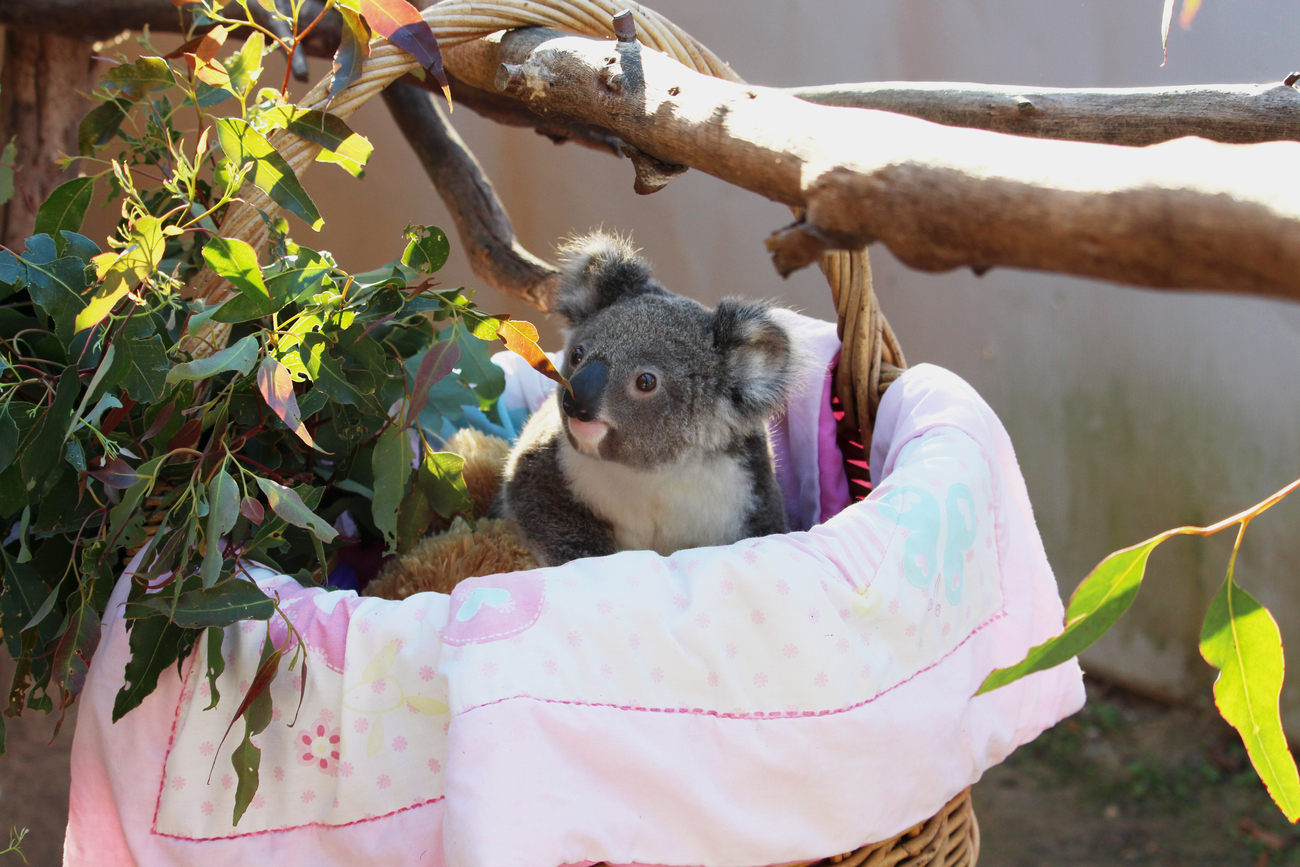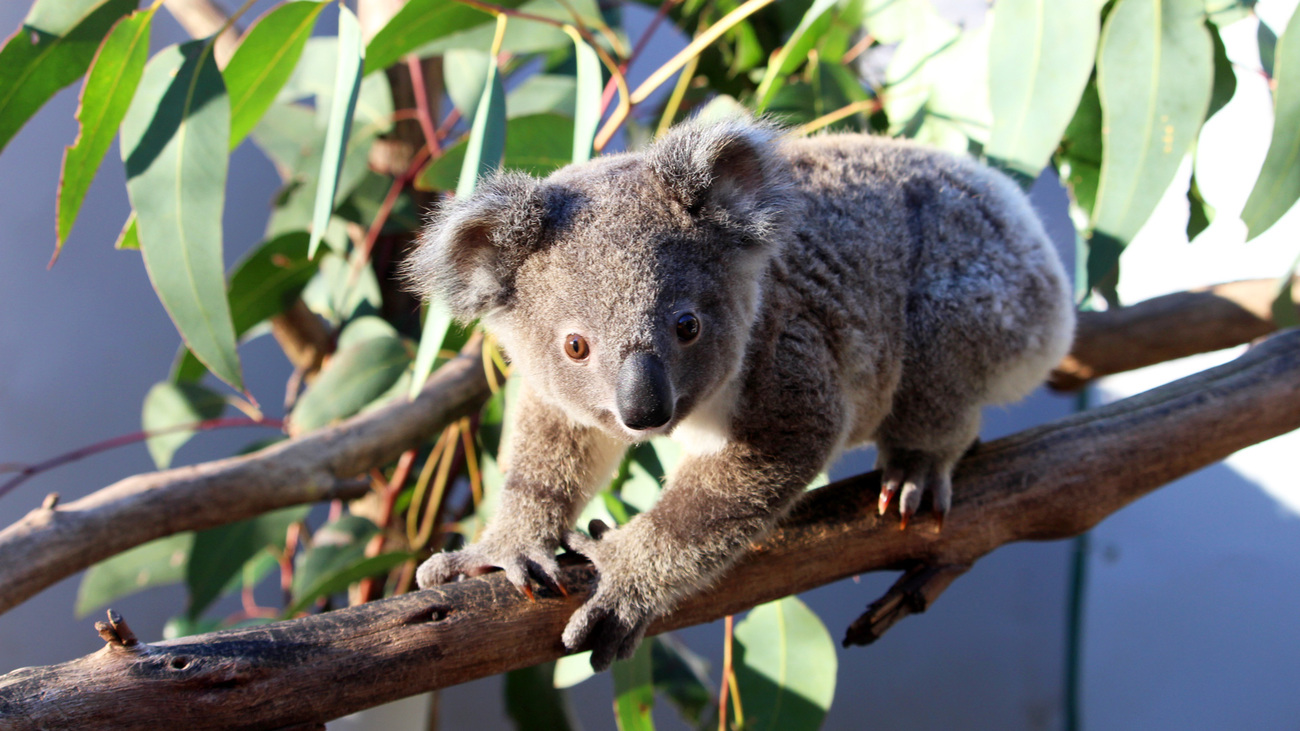Wildlife Rescue - Australia
Australia has one of the highest mammal extinction rates in the worldcaring for Aminya, a rescued baby koala
caring for Aminya, a rescued baby koala

IFAW is partnering with Friends of the Koala in Lismore, New South Wales to support the crucial role of a veterinary nurse Marley Christian at its Triage, Treatment & Pathology Clinic. Friends of the Koala currently rescues over 50% of all the sick and injured koalas in the state. Marley joined Friends of the Koala in 2015 as a volunteer. Since then she has completed a Cert IV in Veterinary Nursing and gained valuable hands-on experience caring and rescuing koalas. In May 2019, Marley became Friends of the Koala’s first employed veterinary nurse and is responsible for ensuring the immediate treatment and clinical supervision of sick and injured koalas. This is an account from Marley about a recently orphaned joey named Aminya and her road to recovery.
I had just finished my shift on a Friday evening in June when I got a call on the Friends of the Koala rescue line. A member of the public had witnessed a koala fall from a tree. She was sadly dead on impact, but upon closer inspection, the individual noticed movement in her pouch. Her little joey was still alive.
When I arrived, both the mother and the joey were wrapped in a blanket so that the joey could stay safe and warm in her mother's pouch. This is exactly the right thing to do, as whenever a mum and baby are found, they should always be kept together— even if the mother is dead.
While carefully examining the mother koala, we found injuries on her back leg that suggest a car hit her, which could explain her lack of strength and subsequent fall from the tree. The little joey looked to be about four months old. She was slightly dehydrated, but seemed to be in good condition otherwise. I brought the joey home, gave her some subcutaneous fluids, and placed her inside a double pouch with a toy panda to cuddle. She was now warm and snug, but very thirsty. I fed her glucose mixed with warm water from a 1ml syringe. I needed to do this very slowly to ensure she did not over inhale the mixture and aspirate. Fortunately, she was taking it well. The people who found the joey named her “Aminya”, after the name of the property where she was discovered. Aminya means “quiet” in Aboriginal language, but this little joey is very vocal. She heartbreakingly mewled for her mum all night, demanding to be fed every two hours. I continued to feed her into the early hours of the morning.

Aminya will be with another caretaker named Anika for about seven to eight months where she will be hand-raised alongside other orphaned joeys. I regularly check in on Aminya and I'm pleased to say that she is doing incredibly well in Anika's expert hands. Aminya still loves to live in her 'pouch' basket with the toy panda, but hopefully she will become more adventurous soon. She loves her bottle, feeding four times a night and twice during the day. She even started nibbling on leaves. She is long and skinny, but steadily gaining weight. Anika thinks that she is destined to be a big healthy girl like her mum (her mum weighed 8.2kg which is above average for a female koala generally weighing around 6-7kg).
Raising orphan joeys is a full-time job that requires specialised training, commitment, and resilience. In keeping with the ‘one mum’ policy, joey carers need to commit for a long time - sometimes up to a year or more. It can be incredibly rewarding, but also an emotional rollercoaster at times as young koalas are incredibly vulnerable and there is no guarantee of survival.
Since koalas are nocturnal animals, our typical day at the centre starts at 5:30am. We meal prep, feed the joeys their meals, and ensure their bedding is warm and dry for a good night’s rest. While the joeys are sleeping, we wash the pouches and bedding, clean the bottles, and make a specialised milk formula for the next 24 hours. Soon after, there is the daily collection of fresh leaf, which can take up to two hours to find the right species of eucalyptus. The koalas have playtime between 11pm and 2am and before you know it, it’s 5:30am again! Time for another day of rehab and care.
Before Aminya is ready for release, we must ensure that she is independent and no longer relies on humans for food and security. This process lasts for a few weeks, during which there is no physical or verbal interaction with caretakers— only monitoring and observation. Most joeys protest at first, but eventually, they are confident and ready to embark on the next step of their journey.
For the final part of her rehabilitation, Aminya will return to Friends of the Koala where she will stay in the koala kindergarten pre-release area for two to three weeks. At this rate, Aminya will likely be released in February or March of 2020. In the fleeting moments of her return to the wild, all those sleepless nights and arduous days will be worthwhile. Watching these little animals take their first climb, look back at us briefly, and swiftly scale up into the top branches is one of the most joyful moments in life. It’s what makes my job the best in the world.
- Marley Christian, Veterinary Nurse at Friends of the Koala
Update October 1st, 2019:
Koalas need our help. Devastating heat waves, excessive land clearing, and urban threats like car strikes have pushed koala populations into a crisis. But we can make a difference for koalas in need, one tree at a time. We're collaborating with our local partners on the ground to rescue koalas and restore crucial koala corridors. Our goal? Raise £100,000 to plant 10,000 eucalyptus trees for koalas! Will you join us in building a better future for koalas and animals everywhere?
Related content
Blog
two years on from the UK’s ivory ban – elephants are still dying for our domestic trade
Read moreUpdates
ifaw's rescue mission for animals suffering in two private Sudan zoos
Read moreBlog
rescuing an orphaned elephant in Zimbabwe: a success story of animals and people working together to better our planet
Read moreEvery problem has a solution, every solution needs support.
The problems we face are urgent, complicated and resistant to change. Real solutions demand creativity, hard work and involvement from people like you.